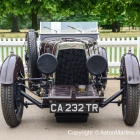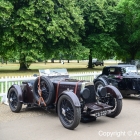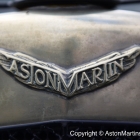By buying into Aston Martin, the marque had acquired a new high quality, powerful engine. At this stage, I must mention that in engineering terms, there was no connection between the Bamford and Martin cars and the Bertelli cars. Aston Martin moved to a factory in Victoria Road in Feltham, Middlesex in late 1926 and by the 1927 Motor Show at Olympia, a new range of cars was first shown. An adjacent bodyshop in Victoria Road was also opened by A.C. Bertelli’s brother, Enrico (Harry) (known as E. Bertelli Ltd) and this is where a vast majority of Aston Martins received their coachbuilt bodies for the next ten years.
At the 1927 London Motor Show, the new Aston Martin Motors Ltd. unveiled three completely new models, the most sporty of which was a pretty 3 seater sports model (S-type) on a shorter, lower chassis. This first car was in fact just a mock-up and was dismantled after the show
The main image above is an example of a 1929 sports model with 2 seater bodywork. The 1495cc engine in its earliest form was able to deliver about 56 bhp, sufficient to power the sports model to about 80 mph. I photographed this car at the official opening of the new AMOC/AMHT headquarters, known as ‘the barn’ at Drayton St Leonard, Oxfordshire.
The 1.5 litre Bertelli cars have been classified by the AMOC in three separate series to aid understanding of their development. The first series cars are distinguished from later cars by their separate gearbox and worm drive rear axle.





















